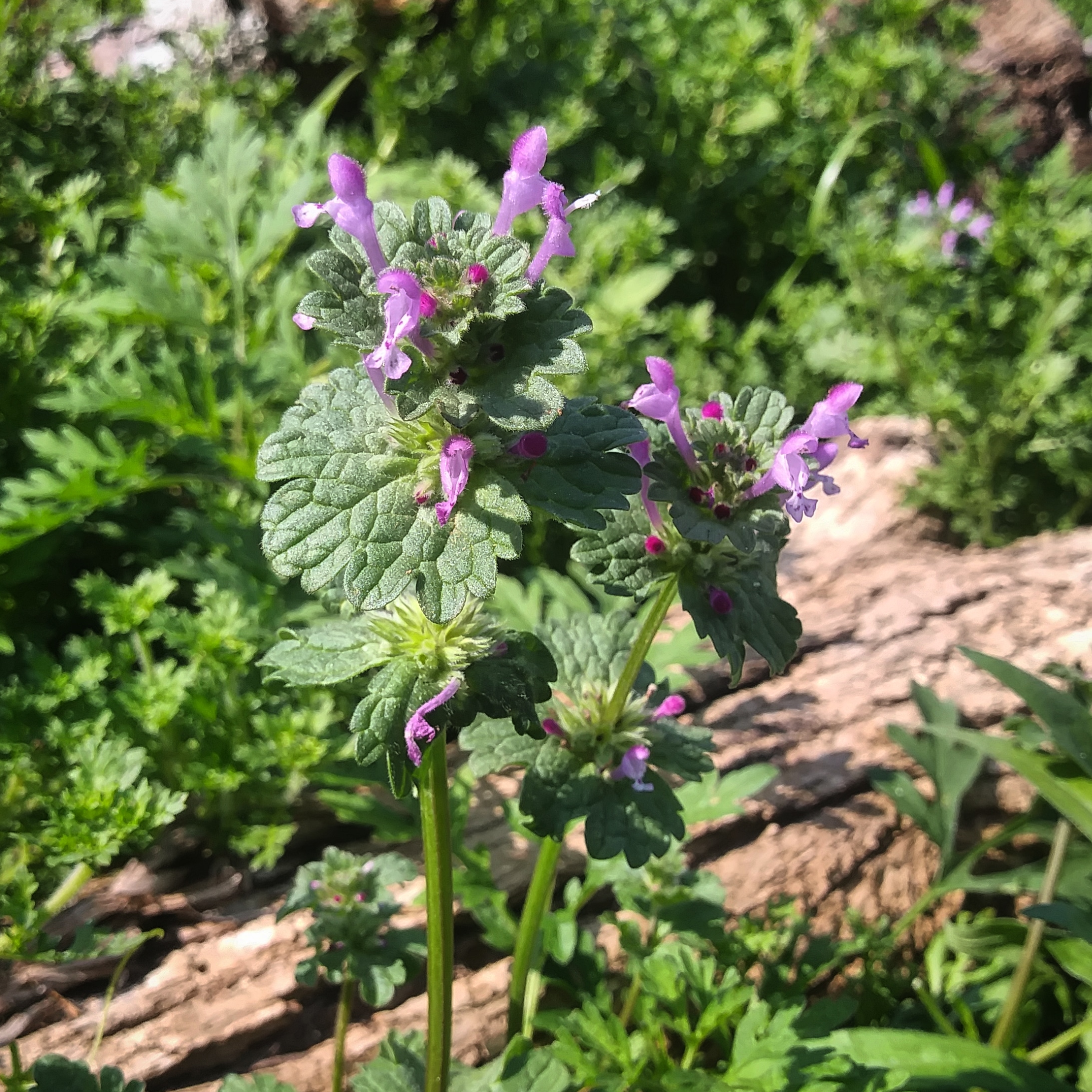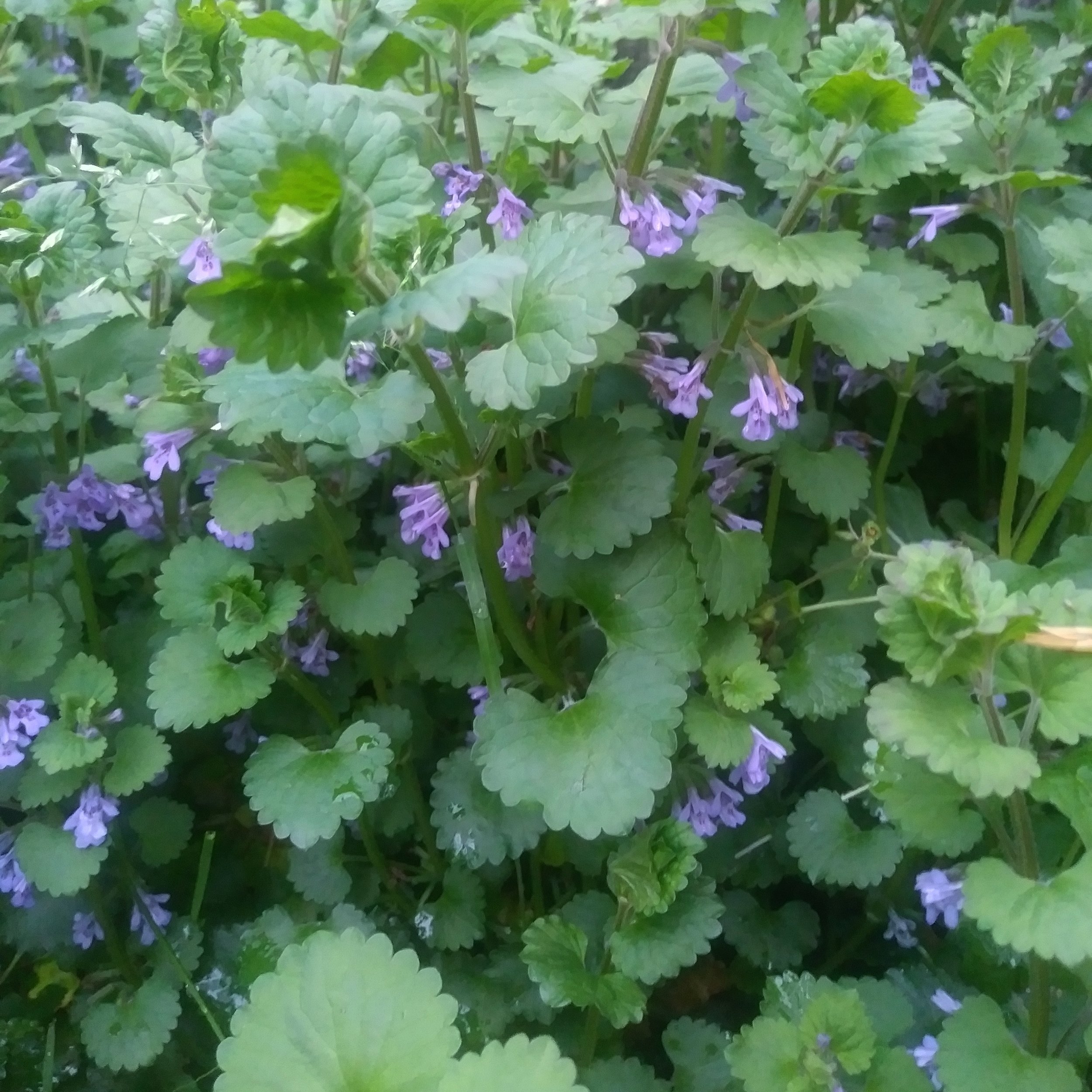This week’s plant for #WildEdibleWednesday is Rhus typhina, or Staghorn Sumac. Dramatic and exotic-looking with its bright red fruiting bodies, sumac is part of the Anacardiaceae family of plants that includes cashews, mangoes, and pistachios, as well as Brazilian pepper, poison ivy, and poison oak.
Read moreWild Edible Wednesday 6/12 - Broadleaf Plantain
“If you’ve ever taken one of our courses at SARCRAFT, there’s a 100% chance we’ve at least mentioned Plantain, if not shown you how to use it. We’ve always said that if you’re going to learn one edible and medicinal plant, it should be this one.”
Read moreWild Edible Wednesday 6/5 - Henbit Deadnettle
“Henbit season is actually tapering off – it prefers cooler temperatures and rarely thrives in the hottest parts of summer except in cool, moist areas. But it’s still out there, so if you want to try it this year, get it while the getting’s good! Like so many of the plants we’ve covered, check your lawn first.”
Read moreWild Edible Wednesday 5/29 - Orange Daylily
“So named because the flowers bloom and die in a day, it’s probably a familiar plant to most of us. I think almost everyone had a grandmother who grew them in her garden, and even if not, you’ve certainly seen them on summer roadsides. They bring back happy memories for me of speeding down unkempt backroads in early summer with the windows rolled down…. “
Read moreWild Edible Wednesday 5/22 - Oxeye Daisy
“The Greeks dedicated the flower to Artemis, the goddess of femininity, as it was useful for treating women’s issues and was thought to bring fertility. Even today, it’s considered good luck in some circles for women who are trying to get pregnant to leave daisies at the ruins of temples dedicated to Artemis.”
Read more#WildEdibleWednesday 5/8 - Red Clover
“As medicine advances and more and more compounds are synthesized from natural sources, maybe it’s time we humbled ourselves and realized that the ancients knew what they were talking about.”
Read moreWild Edible Wednesday 5/1 - Creeping Charlie
“It goes by a weird plethora of alternate names, including Creeping Charlie, Gill-Over-the-Ground, Hedgemaid, Tun-hoof, Runaway Robin, Lizzy-Run-Up-the-Hedge, Catsfoot, and Alehoof. No, not kidding. And don’t ask me how half those names came to be, other than people in the British Isles got bored.”
Read moreWild Edible Wednesday 4/24 - Common Purslane
“Once you have purslane on your property, you’ve got it forever. There’s no getting rid of it, and the harder you try, the more it spreads. It’s fire-resistant, pretty indifferent to most herbicides, and pulling it only breaks the roots into fragments that turn into more plants. So the moral of the story is… if you can’t beat it, eat it!”
Read moreWild Edible Wednesday 4/17 - Purple Deadnettle
“Although it sounds like an alt-metalcore band name (at least to me), purple dead nettle is another common “lawn weed” that you’ve probably walked by every day without knowing what it was. Closely related to Henbit (which we’ll feature in a few weeks) purple dead nettle has a great range of edible and medicinal uses.”
Read moreWild Edible Wednesday 4/10 - Common Vetch
“Vetch has fed humans for thousands of years. It’s been a forgotten companion to us that helped us leave the nomadic lifestyle of the stone age, settle down, and build civilizations. Although it’s rarely eaten in the modern era, you owe it to your ancient ancestors to give it a shot and eat it at least a time or two.”
Read moreWild Edible Wednesday 4/3 - Common Blue Violet
“The violet had great significance to the ancient Athenians, who wove necklaces and garlands out of European sweet violet blossoms for revelers to wear at their wild, wine-fueled spring equinox festivals. They believed violet moderated anger, strengthened the heart, and helped prevent “wine fumes” and next-day hangover headaches. “
Read moreWild Edible Wednesday 3/27 - Eastern Redbud
“Redbud seems to have taken root in the culture of whatever area it grows in. For most native tribes, the charcoal from redbud wood was the color of choice for their black war paint, which symbolized power and aggression.”
Read moreWild Edible Wednesday 3/13 - Forsythia
“As an edible, forsythia is a Godsend during this time of year. If you do much foraging, you know that late January through the end of March is an extremely lean time.”
Read moreWild Edible Wednesday 2/27 - Yucca
“While Yucca isn’t the most widespread plant in the Eastern Woodlands, it’s still a valuable asset to bushcraft and wilderness survival, and is well worth knowing.”
Read moreWild Edible Wednesday 2/20 - Creeping Cedar
“Creeping Cedar looks like something out of the age of the dinosaurs, because it is. Before that, actually. Remains of this exact plant are being burned as coal this very day.”
Read moreWild Edible Wednesday 2/13 - Common Cattail
“Not only is it a four-season edible and a decent medicinal plant, it’s one of the few plants that can truly secure all four of your survival priorities. It’s the Wal-Mart of the swamp – providing food, medicine, building material, and fire starter. We’re talking, of course, about Typha latifolia, the Common Cattail.”
Read moreWild Edible Wednesday 2/6 - Eastern Prickly Pear
“As much as it looks like it belongs in an old Clint Eastwood western, this is, in fact, the only cactus species that is widespread in the Eastern Woodlands. And if you’re lucky enough to find one, it makes a reliable and nutritious year-round wild edible and medicinal plant.”
Read more
Wild Edible Wednesday 1/30 - Striped Wintergreen (Pipsissewa)
“Striped wintergreen’s primary value lies in being a powerful, reliable, year-round medicinal plant. It is a true lifesaving herb in the dead of winter, with a wide range of uses.”
Read moreWild Edible Wednesday 1/23 - Universal Edibility Test
“Today, we’re going to cover one of the most fundamental rules of foraging plants. And really, it’s one of the most useful pieces of wilderness survival knowledge you can have, period.”
Read moreWild Edible Wednesday 1/16 - Dandelion
“The idea that dandelions are a weed is an extremely new one in human history. In America, it only began in the post-WWII years when suburbs began to plague the land.”
Read more



















